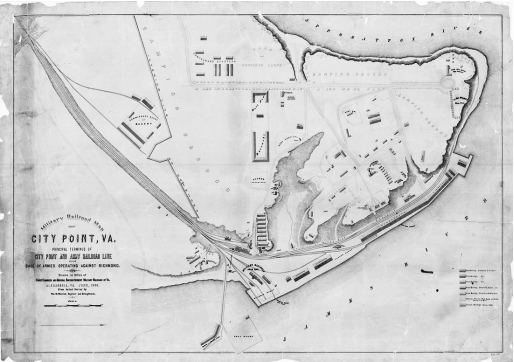
Abraham Lincoln famously spent much of his presidency traveling. He went to Antietam to issue the Emancipation Proclamation and to Pennsylvania for the famed Gettysburg Address.
But it’s less known that Lincoln took other, more dangerous trips — to the fresh battlefields of Virginia, where he met with wounded soldiers both Union and Confederate and quizzed his generals. There, Lincoln could hear the sounds of cannon fire. He could also see the cost of war.
An important site
As the war began to wind down, Lincoln’s top general, Ulysses S. Grant, set up his headquarters at City Point, Virginia, a town located at the junction of the James and Appomattox Rivers. By water, it was within easy reach of Fort Monroe and Washington, D.C.
City Point quickly became the scene of the greatest logistical operation of the Civil War. Railroads and telegraph lines were installed to link the Union armies in the field. It became not only the supply depot of the Army of the Potomac but the nerve center as well — and a massive hospital to boot.
On June 20, 1864, Lincoln embarked on a wartime mission to City Point. Mr. Lincoln left Washington at 5:00 p.m. on the USS Baltimore. He took Tad and Assistant Secretary Gustavus Fox with him. The purpose was to meet with General Grant and briefly visit the army on the James River.
The Baltimore arrived at City Point at about noon. Grant and his staff boarded the ship. Mr. Lincoln had health problems, “an upset stomach.” Someone suggested a sip of champagne might help. With his keen wit, the President replied, “No thanks. Too many fellows get seasick ashore from drinking that very stuff.”
Lincoln and Grant
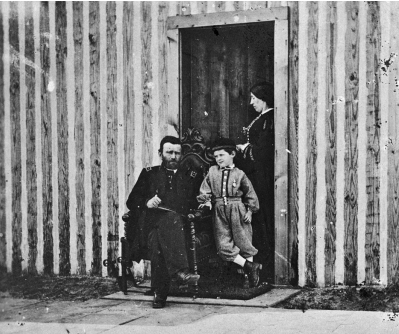
Lincoln rested briefly and then went to Grant’s headquarters. There he mounted the general’s horse, Cincinnati, one of Grant’s favorites. The President visited some of the troops in the lines near Petersburg. Grant rode his other horse, Jeff Davis. Mr. Lincoln also reviewed some of the black troops under General Edward Hincks. He received hearty cheers.
The evening was most memorable. Lincoln and Grant relaxed, sitting in front of the headquarters tent swapping stories. The President and his commanding general had a good relationship. He held Grant in high esteem. Lincoln once said that Grant was one of the few generals who never criticized him or blamed others for military problems. He fought and took the blame and shared the glory with others.
A great opportunity was missed by Mathew Brady. He had arrived in the area and was but eight miles away taking pictures of various generals, unaware that President Lincoln was visiting General Grant.
“The men”
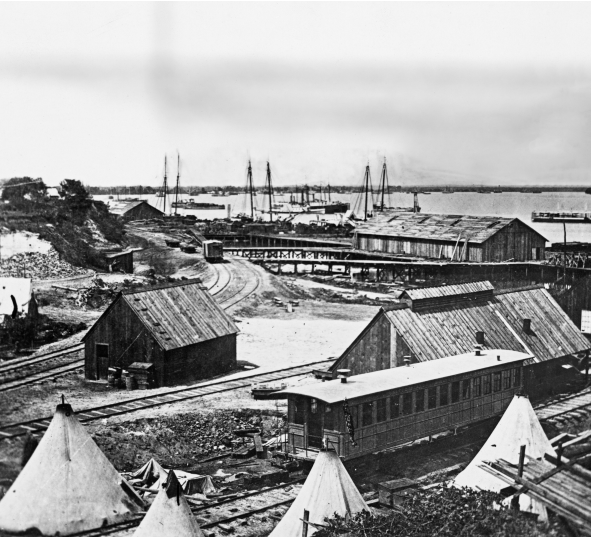
A few days later, the President and General Grant steamed up the James River to observe troop positions and visit the flagship of Rear Admiral Lee. En route, they picked up General Benjamin Butler at Bermuda Hundred and went up the river as far as it was considered safe. Then Lincoln departed on board the USS Baltimore for Washington. The group arrived at the Navy Yard at 5:00 p.m. the next day.
It was a memorable trip for Lincoln, and City Point would remain an important site for the rest of the war. Lincoln would visit it several more times, with his last trip coming in April 1865 — less than a week before he was assassinated.
Each time, the president confronted the price of war. During one visit, on which he was accompanied by his wife, Mary, Lincoln went to the Depot Field Hospital. Chief Medical Officer Edward B. Dalton met the President and invited him to tour the facilities. Lincoln declined, saying he wanted to see the troops. The President said, “Gentlemen, you know better than I how to conduct these hospitals, but I have come here to take by the hand the men.”
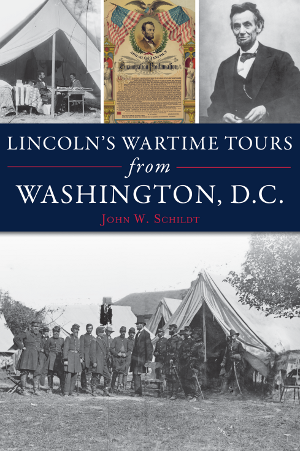
Lincoln’s Wartime Tours from Washington, D.C.
By John W. Schildt
Abraham Lincoln spent much of his presidency traveling. His visits to Antietam to issue the Emancipation Proclamation and to Pennsylvania for the famed Gettysburg Address are well remembered. During the course of the war, Lincoln also traveled to West Point and Harpers Ferry. As hostilities drew to a close, he spent time on the Virginia battlefields, from Petersburg to Richmond and beyond. In this new edition of Lincoln’s Wartime Travels, John W. Schildt details visits to wounded soldiers both Union and Confederate, conferences with generals and the logistics of getting a wartime president from place to place.
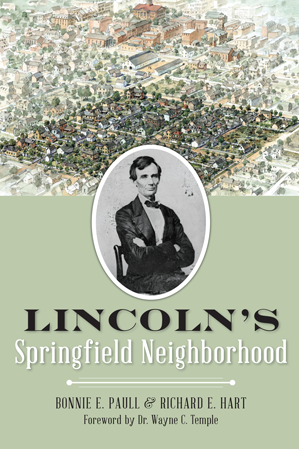
Lincoln’s Springfield Neighborhood
By Bonnie E. Paull & Richard E. Hart, Foreword by Dr. Wayne C. Temple
When an emotional Abraham Lincoln took leave of his Springfield neighbors, never to return, his moving tribute to the town and its people reflected their profound influence on the newly elected president. His old neighborhood still stands today as a National Historic Site. The story of the life Lincoln and his family built there returns to us through the careful work of authors Bonnie E. Paull and Richard E. Hart. Journey back in time and meet this diverse but harmonious community as it participated in the business of everyday living while gradually playing a larger role on the national stage.

